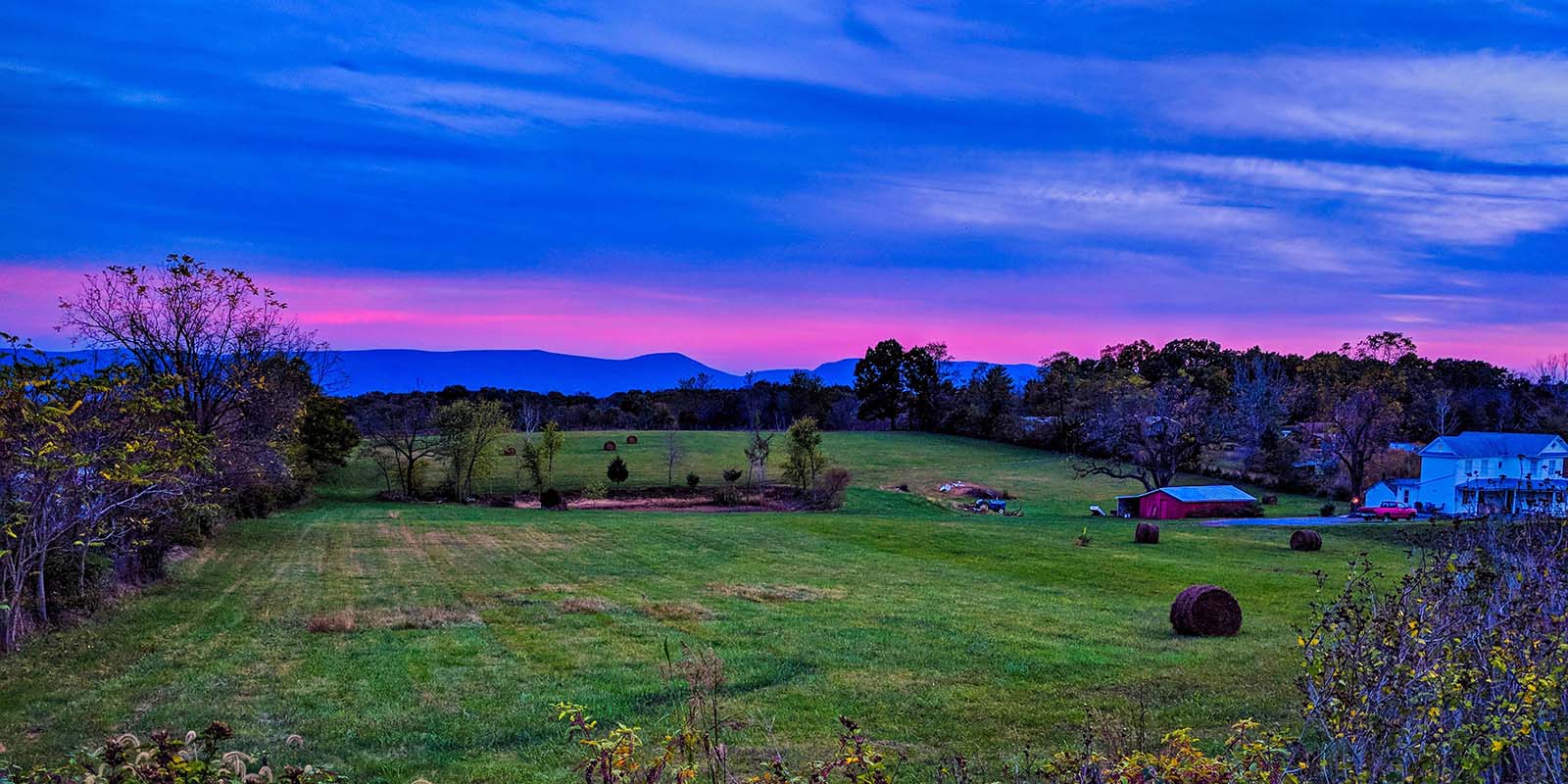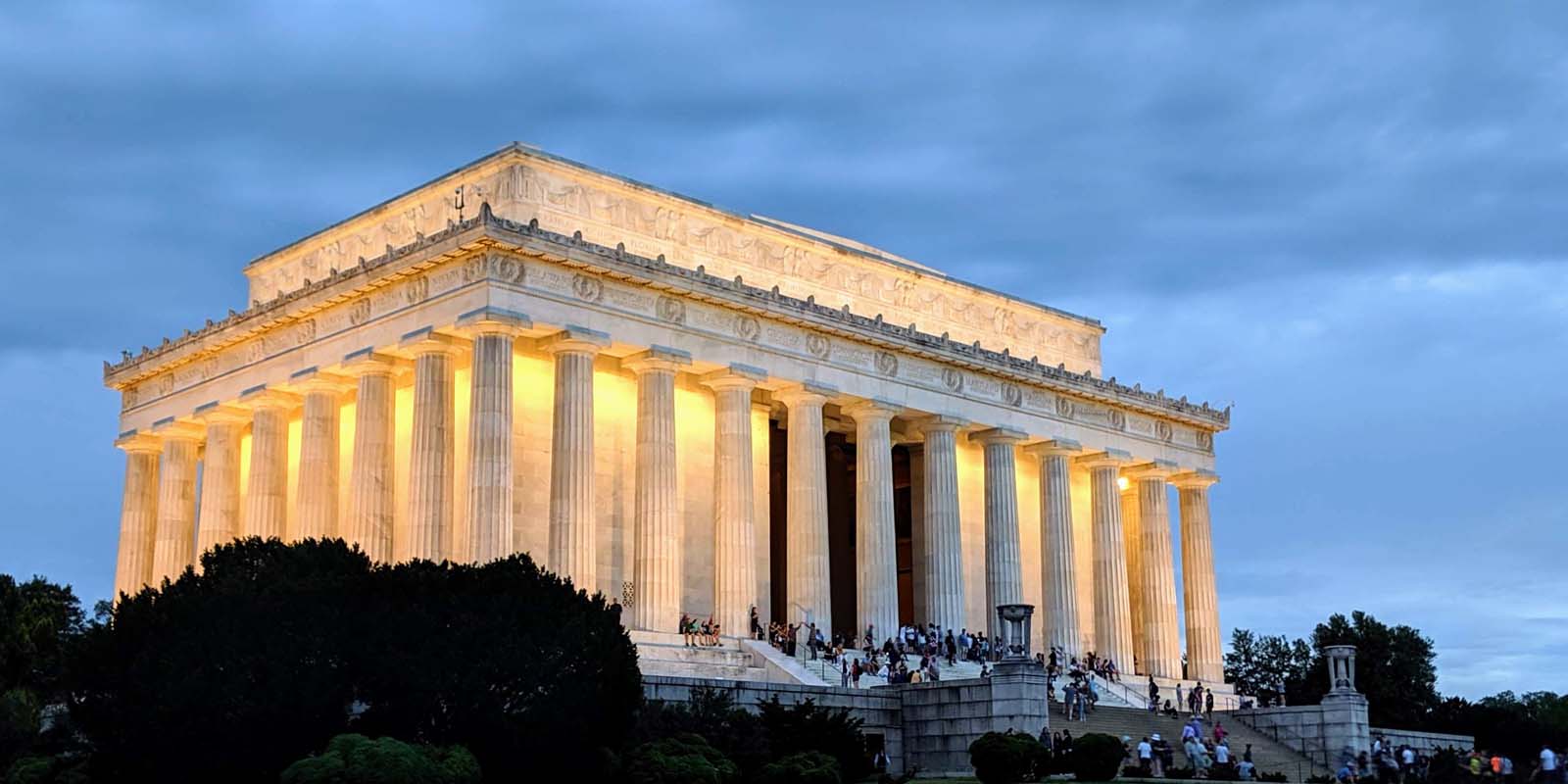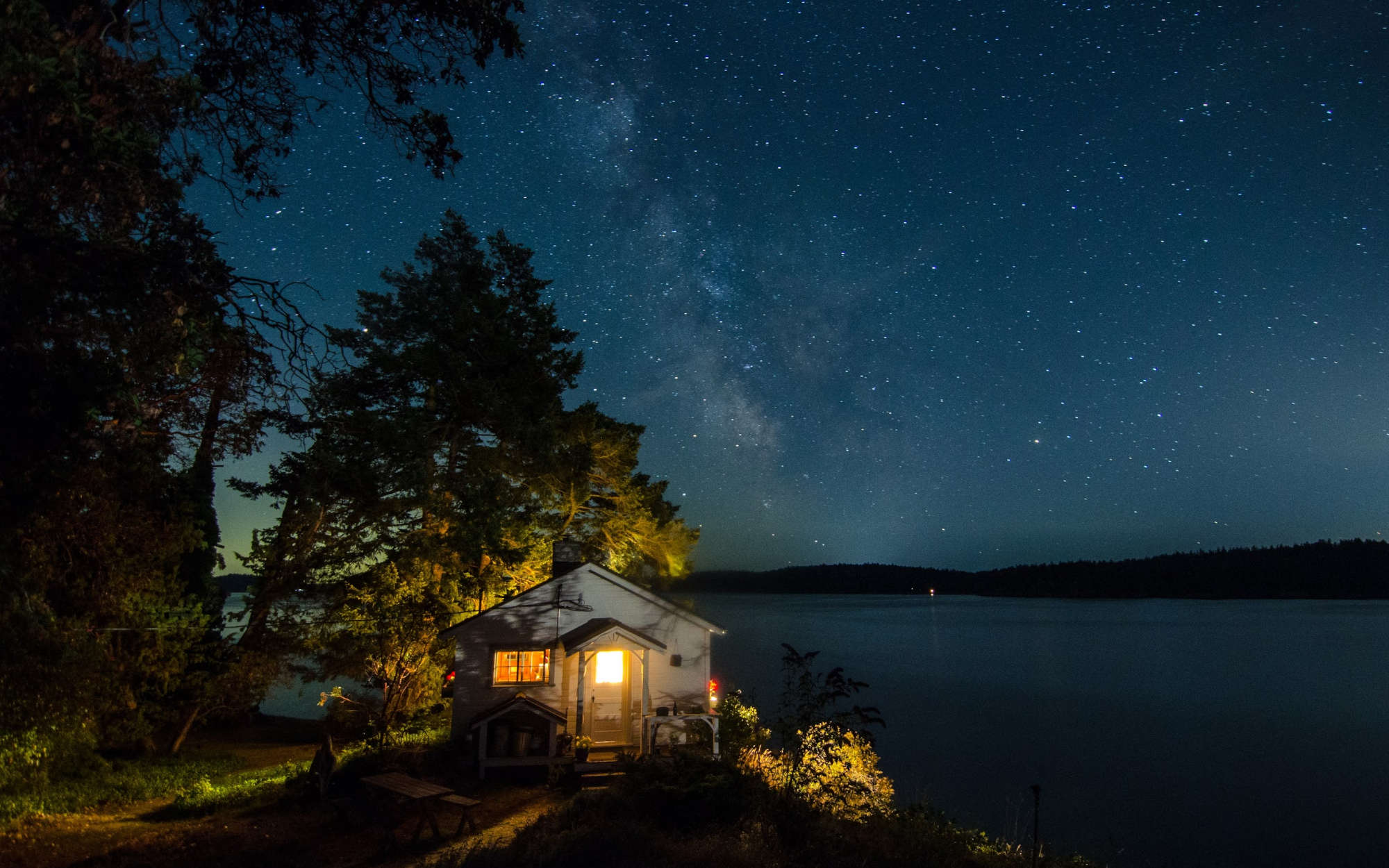This tour shows you the very best of Washington, D.C. during the first week. The second week is an opportunity to explore the area around the nation’s capital, including charming historic towns, the scenic beauty of Shenandoah National Park, and several Civil War battlefields. You won’t need a car while you’re in DC, but you’ll have to rent one when you’re ready to venture beyond the city limits.
Days 1-6: Washington, D.C.
See our Week in Washington tour for details of what to do in the city.
Day 7: To Fredericksburg
- Rent a car
- Drive to Fredericksburg (about an hour with no traffic)
- Lunch at Billiken’s Smokehouse
- Tour the Mary Washington House
- A. Smith Bowman Distillery tour
- Dinner in town. Consider:
- Spend the night in Fredericksburg (night 1/2)
Day 8: Fredericksburg History
- Breakfast/coffee at Agora Downtown Coffee Shop & Roastery
- Civil war battlefield tour(s), some combination of:
- Fredericksburg
- Chancellorsville
- The Wilderness
- Lunch in town (consider Soup and Taco, Eileen’s Bakery & Cafe, Sammy T’s, or the Mason Dixon Cafe)
- Other historic sites in Fredericksburg:
- Spend the night in Fredericksburg (night 1/2)
Day 9: To Shenandoah
- Drive to Shenandoah National Park (1.5+ hours)
- Hike in Shenandoah:
- Old Rag
- Mary’s Rock
- Big Schloss
- Luray Caverns
- Brewery and/or winery
- Spend the night in Shenandoah (night 1/2)
Day 10: Shenandoah
- Shenandoah River trip and/or hike
- Skyline Drive
- Spend the night in Shenandoah (night 2/2)
Day 11: Harpers Ferry
- Drive to Harpers Ferry (1-1.5 hours, depending on where you’re staying)
- Harpers Ferry tour
- Explore the town of Harpers Ferry
- Dinner in Harpers Ferry:
- Spend the night in Harpers Ferry (night 1/1). Good options include:
Day 12: Antietam to Gettysburg
- Drive to Antietam (about 30 minutes)
- Antietam visitor center
- Antietam battlefield tour
- Drive to Gettysburg (about an hour)
- Dinner in Gettysburg
- Be sure to try the Dobbin House Tavern
- Alternatives: Mason Dixon Distillery and Food 101
- Spend the night in Gettysburg (night 1/2)
- Our favorite spot is the Baladerry Inn
- Other options include the Dobbin House and Brafferton Inn
Day 13: Gettysburg
- Gettysburg visitor center and museum
- Gettysburg battlefield tour
- Battlefield Brew Works
- Spend the night in Gettysburg (night 2/2)
Day 14: Return Home
- Drive back to Washington (about an hour and a half)
- Return your car
- Fly home
Detailed Itinerary
Days 1-6: Washington, D.C.
You’ll spend your first week in Washington, D.C. Check out our Week in Washington itinerary for suggestions on how best to spend your time.
Day 7: To Fredericksburg
Now that you’ve seen the highlights of the nation’s capital, you’re ready explore the beautiful country surrounding the city. First, you need to rent a car. It’s probably easiest to do this at the airport you plan to fly out of at the end of your trip; though Ronald Reagan National Airport (DCA) is by far the closest airport to the city, it also has the fewest flight options. If you’re not flying out of DCA, you might want to check how much it’ll cost to rent your car there and return it to another airport.
Drive south about an hour (if there’s no traffic) to Fredericksburg. A beautiful Virginia town with lots of character and overflowing with history, Fredericksburg is full of historic sites dating to the Revolutionary War era. It’s also close to the Fredericksburg, Chancellorsville, and Wilderness battlefields. If you’re ready for lunch when you arrive, stop by Billiken’s Smokehouse for some delicious barbecue.
After lunch, you should have time to see one of the many historic buildings in town. The Mary Washington House is one of our favorites, so you may want to start there. Finish your day by touring A. Smith Bowman Distillery (they offer tours on the hour every day; try to catch the 4 o’clock tour) and tasting some delicious whiskey.
Get dinner in town. Fredericksburg has some excellent dining options. La Petite Auberge offers more upscale French and European fare. Kybecca is a restaurant and bar offering new American cuisine and a great wine and cocktail selection. Cork and Table, Foode, and Ristorante Renato also come well-recommended. Spend the night in Fredericksburg; there are some great bed and breakfasts, including the Schooler House, the Richard Johnston Inn, and the 1890 Caroline House.
Day 8: Fredericksburg History
If you’re not staying at a B&B (or even if you are), consider stopping for a snack and/or coffee at Agora Downtown Coffee Shop & Roastery, a fun coffee shop/bookstore/art gallery/gift shop combo in downtown Fredericksburg. After that, it’s time to learn about the area’s Civil War history.
The Battle of Fredericksburg took place in and around Fredericksburg. When the Union Army crossed the Rappahannock River on pontoon bridges at the beginning of the battle, it was the first amphibious assault undertaken under fire in U.S. military history. The battle’s layout is complicated and made more difficult to trace by the fact that much of it occurred in areas that are now part of the town. As a result, we highly recommend hiring a guide to walk you through it. Hallowed Ground Tours offers customized private tours of battlefields in the Fredericksburg area. Fredericksburg Tours is another option.
It’s worth pausing here to say that we generally think it’s worth it to do guided tours of battlefields. If you don’t have military experience (and sometimes even if you do), making sense of how a battle comes together can be very challenging without someone there to explain it to you. We always get a lot more out of these sites with a guide; having someone there to point things out and answer your questions has added enormous value to these experiences. However, if you’re on a budget, the National Park Service and American Battlefield Trust provide excellent resources to help you organize a self-guided tour.
There are two other major Civil War battlefields nearby. Chancellorsville National Battlefield is only about a twenty-minute drive west of town. A major victory for the Confederacy, Chancellorsville was also where Lt. Gen. Thomas J. “Stonewall” Jackson was fatally wounded by friendly fire. The visitor center offers a small (free) museum and frequent ranger talks (also free). Civil War history buffs will want a guide to show them around the battlefield, but Chancellorsville took place over a smaller area, so it’s easier to see on your own. The National Park Service offers self-guided tours that work quite well.
The Battle of the Wilderness, fought later in the war during May of 1864, took place only about a ten-minute drive west of Chancellorsville. The Wilderness was the first major battle of Ulysses S. Grant’s Overland Campaign. It doesn’t have its own visitor center, but Hallowed Ground Tours and Fredericksburg Tours offer tours, and the National Park Service provides a free self-guided tour. The Battle of Spotsylvania Courthouse, the second major battle of the Overland Campaign, is about 25 minutes southeast of Fredericksburg. Again, you can arrange a private tour or follow the self-guided tour.
Spend all or part of your day touring one or more of the battlefields above (if you arrange a private tour, you can customize it to see as much or as little as you like). Get lunch in town; some good options include Soup and Taco, Eileen’s Bakery & Cafe, Sammy T’s, or the Mason Dixon Cafe. If you’re ready for more history, you can wander the town’s historic sites. Some of our favorites are the Rising Sun Tavern, Hugh Mercer Apothecary, Kenmore, and Chatham Manor.
Get dinner in Fredericksburg (see the suggestions for the previous evening) and spend another night here.
Day 9: To Shenandoah
The next few days are your chance to explore beautiful Shenandoah National Park. Long and narrow, the park stretches about 105 miles from Afton, Virginia in the south to Front Royal in the north. The park is bracketed on the east and west by quaint, charming towns. Where you stay will depend on your plans for your time there. Keep in mind that your next stop is Harpers Ferry, which is northeast of the park. We like the towns of Sperryville (try Hopkins Ordinary Bed and Breakfast), Luray (we loved this Airbnb), and Edinburg (try the Edinburg Renaissance Bed and Breakfast). Massanutten is a resort that’s open year-round; you can often find good deals on cabins and condos through Airbnb or VRBO. Sperryville is on the most direct shot between Fredericksburg and Harpers Ferry, so it’ll mean the least driving (though that’ll also depend on the activities you choose to do).
How you spend your time in Shenandoah is entirely up to you. Check out our Shenandoah National Park page for some ideas. We recommend at least one hike; some popular options include Old Rag, Big Schloss, Mary’s Rock, Whiteoak Canyon, Stony Man, and Hawksbill Mountain. These hikes vary in length and difficulty; read their descriptions and map them out based on where you’re staying and pick one or two that interest you. Another popular attraction in the Shenandoah area is Luray Caverns, a massive cave complex (guided tours are required).
The area around Shenandoah is also dotted with wineries and small breweries. One of our favorite wineries is North Mountain Vineyard & Winery, where they make tasty wines in a beautiful setting nestled among the rolling hills. Some of our favorite breweries in the area include Hopkins Ordinary (yes, the B&B is also a brewery, and their beers are excellent), Ridge Runner Farms and Brewing Co. (delicious beers with a gorgeous view), and Swover Creek Farms (tasty beers and wood-fired pizzas in a converted farmhouse).
Consider renting a cabin or condo with an outdoor grill; if the weather is nice, you can have a cook out. Alternatively, you can find a restaurant wherever you’re staying. If you’re near Luray, we highly recommend Moonshadows.
Day 10: Shenandoah to Harpers Ferry
Spend your morning in Shenandoah. Go on another hike, or float or kayak the river. A number of companies offer tube, canoe, and kayak rentals (see our Shenandoah page for details). You can bring a picnic lunch if you like, and eat on the water. It’s a fantastic way to spend a couple of hours during the summer.
In the afternoon, explore another of Shenandoah’s famous attractions: Skyline Drive. This road runs along the spine of the park, following the crest of the mountains. It offers jaw-dropping views (especially in the fall when the trees are turning). Be aware, though, that entry costs $30 per vehicle. Pick an entry point near wherever you’re staying, and drive north to the Front Royal entrance station.
From there, continue about about an hour northeast to the town of Harpers Ferry, West Virginia. Get dinner in town; options include the Anvil Restaurant, the Potomac Grille, the White Horse Tavern, and Kelley Farm Kitchen. Consider spending the night at the Jackson Rose, the Lily Garden Bed & Breakfast, or the Stonehouse B&B.
Day 11: Harpers Ferry
Harpers Ferry is famous as the site of John Brown’s raid. In 1859, Brown, an abolitionist, brought 22 men to seize a federal arsenal at Harpers Ferry, West Virginia. They intended to arm slaves and begin a revolt. A company of U.S. Marines retook the arsenal, captured Brown and his crew, and Brown was executed. Harpers Ferry was also the site of a important strategic victory for the Army of Northern Virginia during the Civil War in September 1862.
The best way to see Harpers Ferry is to hire a guide. We recommend the Harpers Ferry Park Association. Your guide will drive your car through the town, show you the battlefield, tell you about Brown’s raid, and customize the tour to your interests.
In addition to the history of the raid and the battle, Harpers Ferry is a quaint town in a stunning location. Thomas Jefferson wrote that the view of the Potomac cutting through the Blue Ridge Mountains was “perhaps one of the most stupendous scenes in Nature” worth the journey across the Atlantic from Europe. Seated on a spur at the junction of the Potomac and Shenandoah Rivers, the town rises among the mountains. It’s spectacular to visit in the fall, when the trees on the hills are changing to red, yellow, and orange. The downtown area also features a number of historic buildings: taverns, shops, museums, and an historic candy company. Spend the rest of your day poking around the town or hiking in the surrounding area.
Day 12: Antietam to Gettysburg
Begin your day by driving from Harpers Ferry to Antietam (about half an hour). The Battle of Antietam, fought on September 17, 1862 (only a few days after the Battle of Harpers Ferry), is known as the bloodiest day in American history. Though the battle was tactically inconclusive, it resulted in about 22,000 casualties, including about 3,600 killed, and ended Robert E. Lee’s Maryland Campaign. Begin at the visitor center and check out some of the activities offered, including the museum, introductory film, and ranger-led battlefield talk. If you want a more thorough private tour, hire a guide through Antietam Battlefield Guides.
After you’ve seen Antietam, continue on to Gettysburg (about an hour). Get dinner in Gettysburg; we love the Dobbin House Tavern. Now a bed and breakfast and restaurant, the Dobbin House is Gettysburg’s oldest home, dating to 1776. It’s full of history; it was a station on the Underground Railroad and was a hospital following the battle. Be sure to eat there on one of your two nights in town.
Other options for dinner include the Mason Dixon Distillery and Food 101. Spend the night in Gettysburg as well. Our favorite place to stay is the Baladerry Inn. It’s about a ten minute drive out of town, but it’s beautiful and incredibly peaceful. The hosts are fantastic, and the inn is an historic building dating to 1812; it served as a hospital during the battle. If you want to stay in town, try the Brafferton Inn or the aforementioned Dobbin House.
Day 13: Gettysburg
Gettysburg is perhaps the Civil War’s best known battle due to its strategic importance (it marked the end of the Army of Northern Virginia’s last offensive of the war), brutality (approximately 50,000 casualties), and the Gettysburg Address (Abraham Lincoln’s speech to dedicate the military cemetery about four months after the battle). It’s also one of the best national historic battlefields in the National Park system and a beautiful spot in the rolling hills of southern Pennsylvania.
Your first priority should be to learn about the history of the battle, even if you’ve read or seen some (or all) of the many books, movies, and documentaries about Gettysburg. Reading or watching doesn’t match the experience of actually being there.
Start at the visitor center where you can get information about the park and visit the museum (entry to the museum is $9; it’s $15 if you want to watch the cyclorama). You can take a self-guided drive through the battlefield that follows the action, but if you have the time and cash, we highly recommend hiring a licensed guide for a tour through the Gettysburg Foundation. Your guide will meet you at the visitor center and drive you in your vehicle, stopping at important spots, so you can focus on learning and taking in the battlefield scenery. Your guide will tell you all about the battle, customize the tour to your interests, and answer your questions along the way.
In addition to your tour, you should be sure to check the Park Service’s Things to Do Page, which will tell you about living history activities, ranger programs, battlefield walks, and more. These activities are usually free.
Once you’ve seen the battlefield, you should see some of the sights in and around Gettysburg. Gettysburg is a charming historic town with lots of neat shops and restaurants. A little bit outside of town is Battlefield Brew Works, a brewery and distillery where you can try tasty beers and spirits.
Get dinner in Gettysburg and spend a second night here, or you can drive back to Washington if you’re leaving early the next morning.
Day 14: Return Home
This is the end of your journey. Drive back to the Washington area, return your rental car, and return home.





